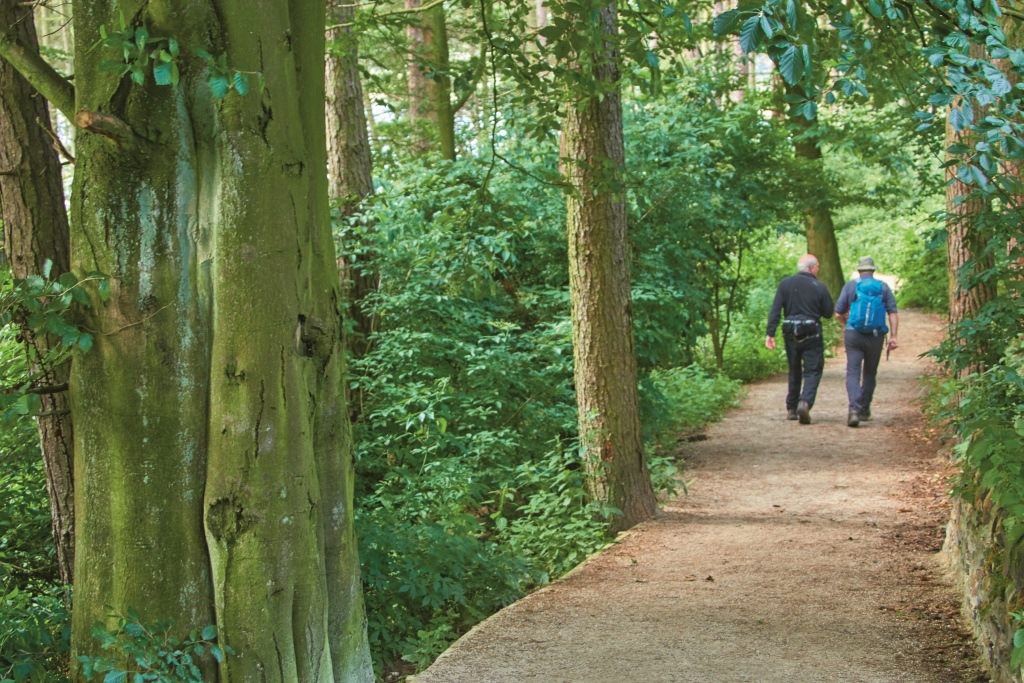Achieving better land management and carbon sequestration in Yorkshire through partnership.
Gordon Rogers, head of sustainability at Yorkshire Water, describes a little about how supporting the Yorkshire Land Partnership compliments their other programmes to reduce emissions and protect and grow all forms of water resilience to ensure the sustainability of its services.
What is the role of Yorkshire Water?
Yorkshire Water is the region’s water and wastewater services provider.
A new and growing focus on land management for carbon storage and climate resilience benefits is one important aspect of Yorkshire Water’s climate change strategy and commitment to achieving net zero by 2030. We realised the big questions we were asking ourselves, and the knowledge were gaining, were just as relevant to other land owners, influencers, charities, local authorities, customers, researchers, experts, and citizens of our region.
What is the Yorkshire Land Partnership aiming to do?
Its purpose is to develop a collective understanding of the opportunity of the land we own, communicate this with a collective voice and enable collective action that benefits Yorkshire.
Who is involved in the Yorkshire Land Network?
Landowners covering more than a third of Yorkshire’s land area gathered to discuss how changes to land management can help address climate change. Working together we can pursue such objectives by undertaking shared initiatives, working with the communities in a manner that can deliver change at an unprecedented scale and at pace.
As well as Yorkshire Water, membership includes: The Devonshire Group, Peak District National Park, Yorkshire Wildlife Trust, Royal Society for Protection of Birds (RSPB), Environment Agency, The Woodland Trust, The Forestry Commission, National Trust, and the National Farmers Union (NFU).
What changes have you made?
As a first initiative, a working group for carbon was established about a year ago. The aim was: ’to explore and implement a common system of measuring and growing carbon capture across Yorkshire, to understand the potential for environmental works to increase (or harm) capture, and to determine and introduce a method of securing investment to assist with those works.’
What challenges relating to land carbon still need to be overcome?
There are plenty - for example,
-
There is no simple or ready-made solution to meet our ambition, we developing this by building on existing approaches. We have been learning from early leaders already working to apply the Woodland Carbon Code and Peatland Carbon Code, and there is appetite for this to mature as an easily deployable process which can be extended to other types of habitat or intervention.
-
Methods to easily provide verification are still maturing and the need for highly robust verification can hinder delivery of projects which have a strong consensus for being a good thing to do.
-
Verification of schemes outside peatland and woodland is poor and needs further work to be established.
What are the carbon working group’s future plans?
In the future the group hopes to grow land management activities across Yorkshire by making it much easier to consider and report carbon storage and wider benefits for people and the environment.
The initial tangible areas of work have been agreed as:
-
Supply – identifying pilot sites.
-
Demand - engaging with organisations who may have an interest to fund and otherwise support land and carbon sequestration activity.
-
Frameworks - Continue to mature the accounting and science to help underpin our approach and carbon accreditation.
How do you monitor carbon sequestration?
Yorkshire Water has developed a carbon model so we can estimate the carbon emissions associated with our estate and land management choices. By applying this model we have determined a stretching goal to grow our ability to store carbon in our land, as a component of our carbon reduction strategy. This will help us to offset the hardest aspects of our carbon footprint, known as process emissions, which come from our operational activities to treat sewage sludge. We will further develop the accuracy of our carbon model over time, and we are ensuring carbon is a key consideration in all our land management and operational decisions.
Through multiagency partnership in the Calder Valley we have made significant headway on our commitment to plant one million trees by 2028. Over 200,000 trees have been planted so far. They will help store carbon as they grow, and capture and slow rainwater to help reduce the risk of downstream flooding. The planting is also being designed with wildlife and recreation in mind.
Do you have a tip to share?
Don’t get too bogged down in administrative complexities. While they are important and have their place, it is critical to stay focused on the tangible benefits that we all need and want.






